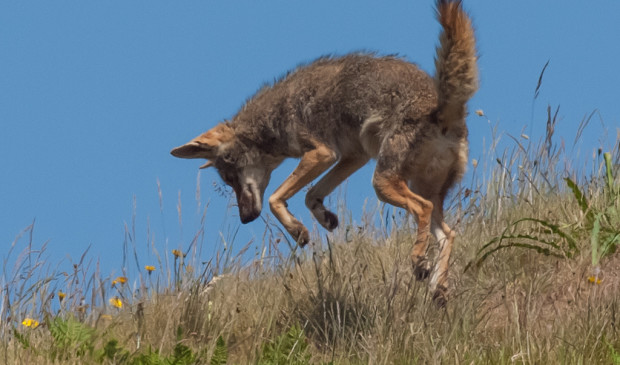Commission tells city to cut ties with state on coyote control
Monday, October 19, 2015 by
Jack Craver The Animal Advisory Commission approved a number of recommendations last Monday aimed at getting the city to set up its own wildlife management service. Since 2012 the city and county have contracted with Texas Wildlife Services, which has assigned a full-time wildlife biologist to reduce conflicts between humans and coyotes.
The decision appears to have been shaped by differences of approach advocated by policymakers in Austin – a “no-kill” city – and state authorities, who take a more traditional approach to animal control. Members of the panel complained that the state agency was responding to complaints of coyotes by setting traps that ensnare animals that aren’t threats to public safety.
“My concern is we are eliminating animals indiscriminately,” Tawny Hammond, the city’s chief animal services officer, told the panel.
The solution, explained Commission Chair David Lundstedt, is for the city and county to handle their own pests.
“Our hope would be to get a new person,” Lundstedt told the Austin Monitor. “Wildlife Services is a very controversial organization, responsible for killing hundreds of thousands of animals, including targeted wildlife and untargeted wildlife.”
A commission workgroup thus came up with four recommended actions for the city to take. The recommendations call for the city to develop a comprehensive wildlife management policy; create a new position, “wildlife management specialist”; terminate its contract with the state; and negotiate with Travis County to jointly fund the position.
Currently, the county pays the state $57,000 for the wildlife biologist, while the city picks up the remaining $10,000. Based on the commission’s recommendations, the city and county would simply direct those funding streams to the new city position.
“It may be something that has to wait until the next budget cycle,” Lundstedt said. “Last night was a good starting point. I’ve learned to be patient. We’ll have to find some co-sponsors to get the ball rolling.”
Stephanie Marsh came before the commission to urge that a future city wildlife policy not include Austin Wildlife Rescue in its network of organizations providing shelter to rescued animals. Marsh, an environmental and conservation specialist for the city, said she volunteered for the group in 2010 and was troubled by what she described as incompetent and negligent care of the sheltered animals.
She criticized the group’s use of carbon dioxide gas to euthanize animals, saying that shelters across the country were increasingly turning to “more humane” intravenous methods. She also criticized the group for not having a licensed veterinarian on staff and alleged that she saw injured animals left unattended for long periods of time and that the facility was infested by rats.
“My hope is that if they are included (in a city network), that AWR would be first audited due to animal welfare concerns,” Marsh said.
Commissioner Kristen Kjellberg, a veterinarian at the Emergency Animal Hospital of Northwest Austin, responded that a lack of animal rehabilitation specialists has reduced options for where to send injured animals.
“The two big rehabbers we work with – none of which are big fans of Austin Wildlife Rescue – one of them is retiring,” Kjellberg said. “So unfortunately, we’re kind of pressed as for who we’re going to send in the future. A lot of people have started thinking about sending (animals) to Austin Wildlife Rescue, but it’s a concern of mine.”
When asked by the Monitor to elaborate on her concerns the next day, Kjellberg declined to comment.
Austin Wildlife Rescue President Preston Doughty forcefully pushed back on the allegations, asking why Kjellberg wouldn’t detail her concerns and saying that a volunteer from five years ago was not a credible critic.
“Where’s she been the last five years?” he asked. “We’ve changed a lot.”
Among the changes he touted were two veterinarians on the group’s board who regularly visit to tend the animals. He acknowledged that the group did have issues with rats but had dealt with them through pest control measures. They continue to regularly monitor the situation, Doughty said.
The use of gas to euthanize animals is standard practice and is one of the methods recommended by the National Wildlife Rehabilitators Association, he added.
Doughty also said that many people who aren’t experts on wild animals, including many volunteers, don’t understand that the goal in wildlife care is to minimize human handling of the creatures, which experience stress from human contact.
“If they have a problem, they should come up to us and talk to us about it,” he said. “We don’t like to be sniped at. It’s not fair.”
Photo by Franco Folini made available through a Creative Commons 2.0 license.
You're a community leader
And we’re honored you look to us for serious, in-depth news. You know a strong community needs local and dedicated watchdog reporting. We’re here for you and that won’t change. Now will you take the powerful next step and support our nonprofit news organization?







